Types and varieties of anthurium
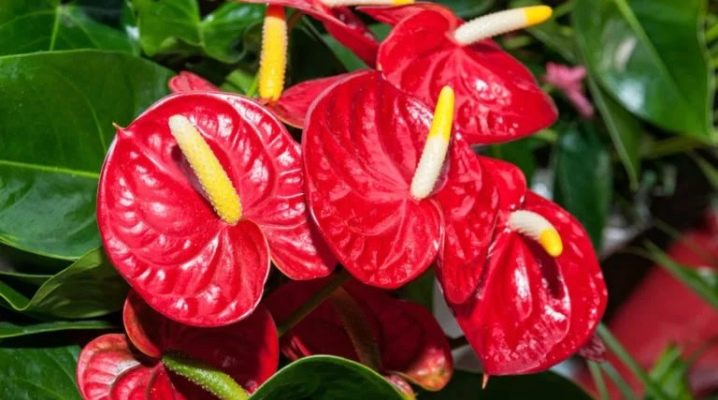
Anthurium is one of the most popular flowering plants grown in indoor and outdoor culture. This exotic with an extraordinary and very effective appearance has become one of the recognized favorites of florists, phytodesigners and florists. Among the representatives of the tropical flora, anthurium stands out for its peculiar structure of the inflorescence in the form of a yellow cob rushing upward, surrounded by a wide inflorescence leaf.
It is prized for its long flowering several times a year and a variety of colors from classic red and white to unusual green and almost black. Anthuriums are ideal cut plants for bouquets and compositions with arranging greenery, they are widely used to decorate residential and office spaces, design various events, especially expositions of exhibitions and arrangement of flowering partitions.
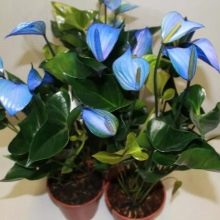
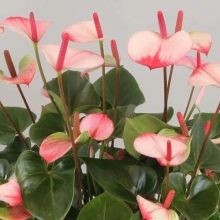
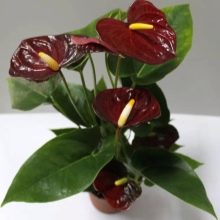
Description
The genus Anthurium, uniting herbaceous evergreens, is a member of the extensive Arum family. Habitat - the South American continent and Central America, where its representatives are found in rainforests subequatorial forests and mountainous areas in all their diversity. Most of them have joined the epiphytic and semi-epiphytic way of life, existing in close contact with large trees. The genus also contains many long-stemmed liana-like and terrestrial herbaceous creeping forms.
Representatives of the anthurium genus owe their decorativeness to the evergreen leaves with a leathery texture. In shape, they can be solid, incised, deeply dissected. The variety of leaf colors is also impressive: in some plants it has a delicate velvety tint, in others - a luxurious satin sheen, in others - silvery veins appear against a green background.
There are many large-leaved ornamental painted varieties.
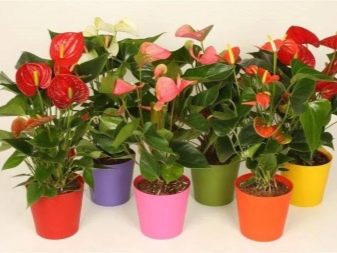
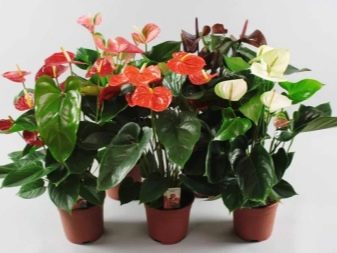
The main advantage of these exotic plants are incredibly beautiful flowers. They themselves are small and collected in long, dense cylindrical, tapering at the end, straight or curved tail-shaped inflorescences-cobs. Around each ear there is an inflorescence leaf (bracts) - a bedspread, whose size and color vary depending on the species. Its surface can be glossy glossy or matte pubescent. Fertilized ovaries of faded plants form fruits with juicy pulp and berry-like shape.
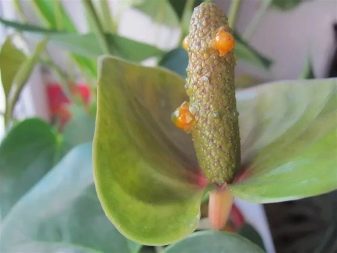
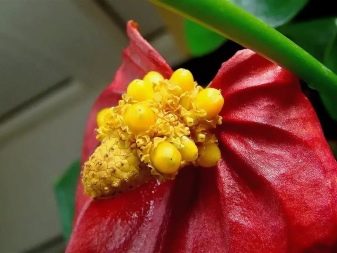
Varieties
The species diversity of the genus Anthurium has about 500 items. Despite such a rich selection, only about 30 species are grown in culture.
Decorative blooming
Ornamental-flowering varieties are most often grown at home.
- Anthurium Andre (andrianum). One of the most popular tall species, which gave rise to many varieties. These are short-stemmed plants with a developed root system and glossy, heart-shaped leaves of an intense green color. The length of the leaf plates is 28-40 cm, the width is 13-19 cm.The inflorescences in the form of a cylinder are colored yellowish, white, light pink, their length is 9-14 cm.
The inflorescence is broad-heart-shaped with a leathery texture, sometimes with a pimpled surface. The colors range from pure white and pinkish to salmon and crimson red.
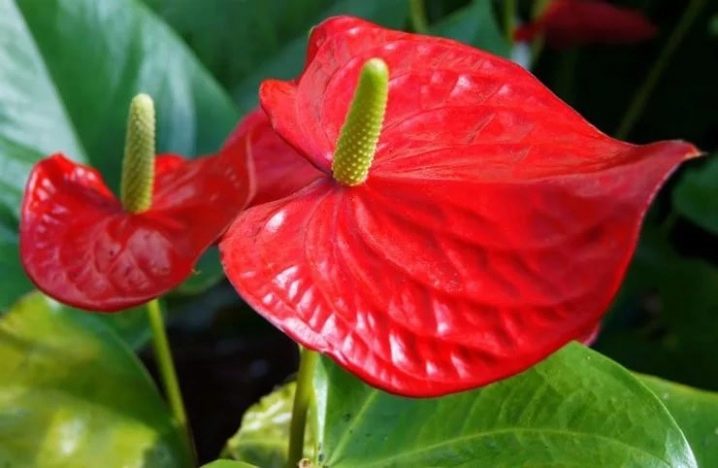
- Scherzer's Anthurium. Representatives of another popular and smallest anthurium species, whose height does not exceed 40 cm, are natives of Costa Rica.They lead a terrestrial or epiphytic lifestyle, their feature is the presence of very short, in some cases underground stems. They are elegant plants with lanceolate or almost ellipsoidal leaves that have a leathery texture and a matte surface. Both sides of the plates are dotted with dark specks; the length of the petioles is 5-20 cm.
The length of the peduncle is 15-50 cm, the ovoid or ellipsoid bracts have a dense texture and are painted in a bright red color with an orange undertone. Bracts length 3.8-11.5 cm, width 2.5-6 cm.
Plants of this species are distinguished by the unusual shape of a yellowish or carrot spirally twisted ear, reaching a length of 6-8 cm. During the flowering period, they smell quite pleasant.

Both varieties became "parents" for a huge number of highly productive garden forms and varieties.
- "Turenza". A variety with beautiful glossy leaves and a lush bush. The color of the bracts is intense red, the cob is deep yellow with a disappearance of orange. The height of the bush is 0.5 m.

- "Pink Champion". The variety impresses with the splendor of the abundantly leafy bush. The color of the cobs is yellowish or greenish. The color of the wide-heart bracts is pink.
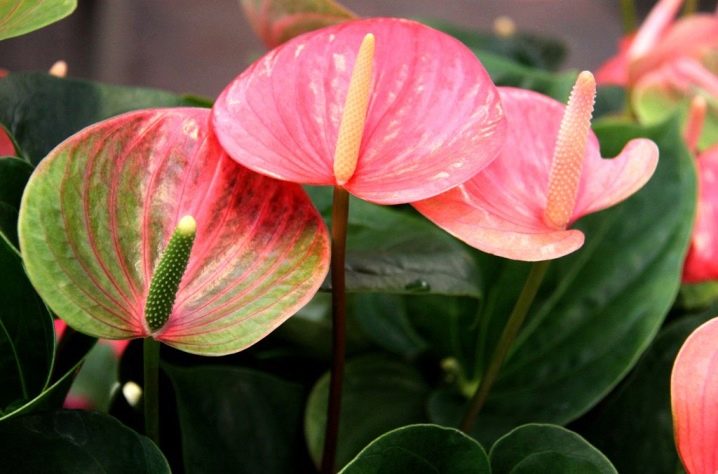
- Dakota. Bushy large-sized plants 0.8 m high with an erect yellowish cob and a large glossy bedspread. Colors include various shades of pink and red.
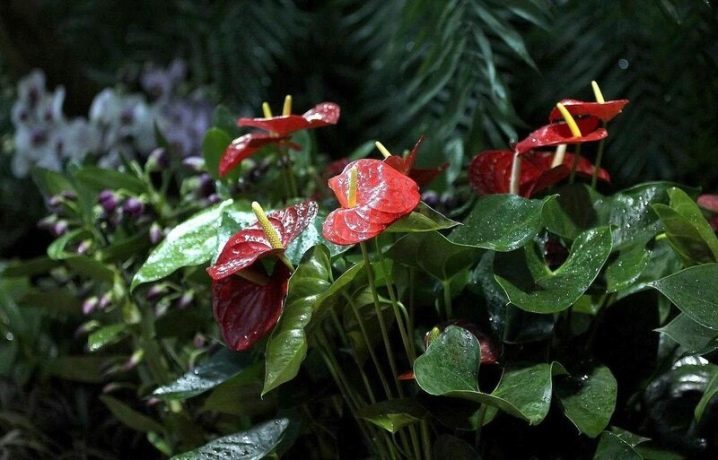
- Sierra Magic. A compact variety, in which the modest size of flowers compensates for their abundance, since its representatives are capable of producing 7-10 buds at a time. The ears are yellow with a white tip. The color of the bedspread is intense red, white, pink.
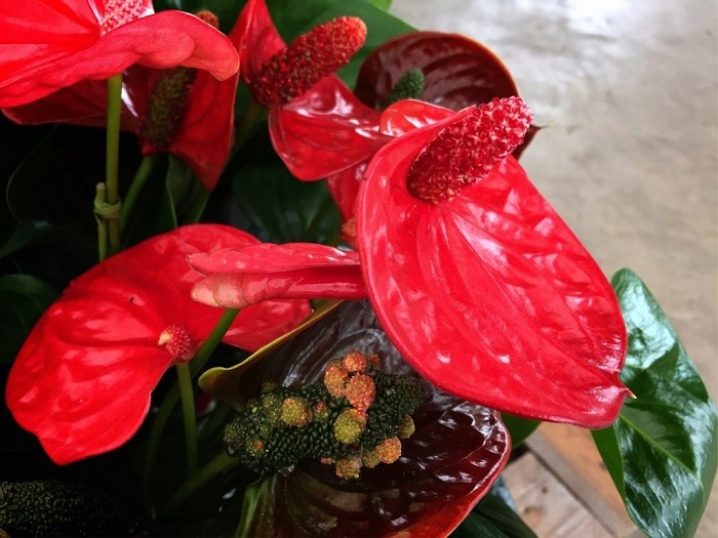
- Baby Boomer. You can recognize this hybrid by the original two-tone color of the bedspread. The entire surface of the plate is red, with the exception of the green base. The ear is straight, the leaves are oval with a pointed tip.
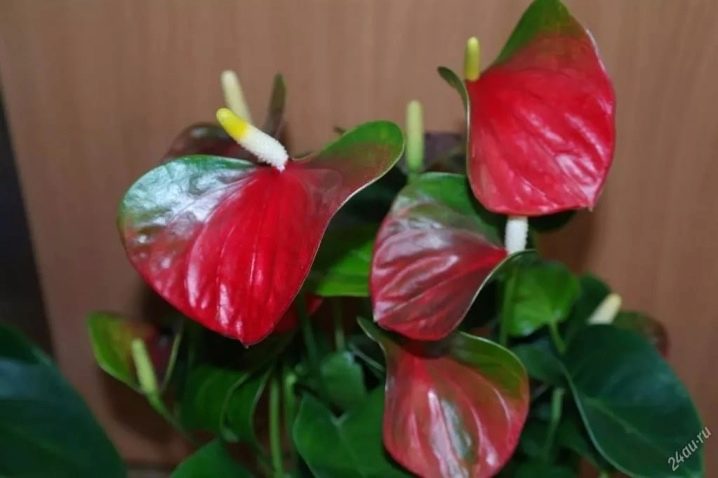
- Leganza. Strongly leafy variety. The initial color of the cob is yellow, then it acquires a rich carrot shade. The color of the bracts is rather unusual: it can be shrimp or coral with a spectacular greenish edging.

- "Jolie"... This bushy variety attracts attention with its unusual tulip-shaped bedspread. The bracts are colored in a very delicate pinkish-white shade.
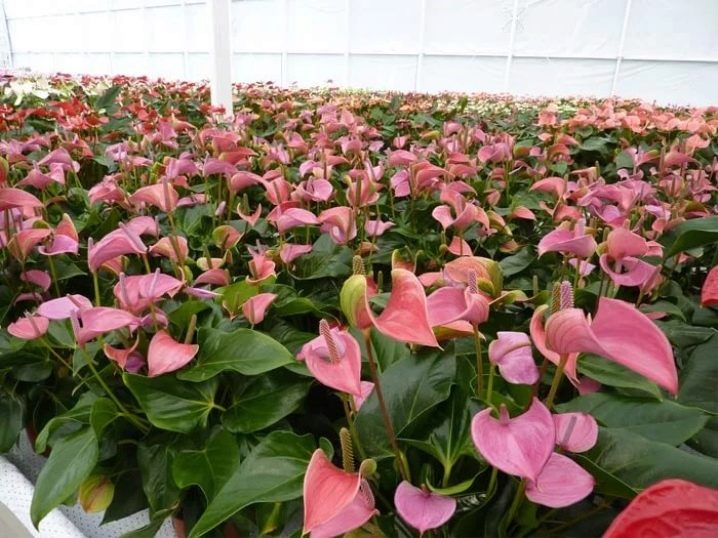
- "Bugatti Veyron". Medium-sized and very elegant shape with a rich scarlet coloration of the inflorescence plate and a thin violet-gray ear of contrasting color.
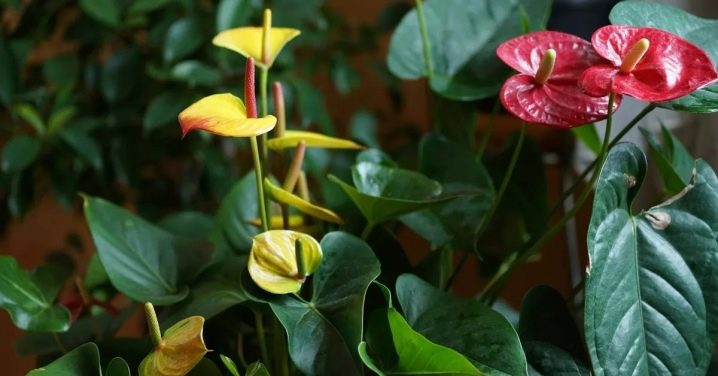
- Pandola. Compact bushy plants with medium-sized leaves with long petioles and straight creamy inflorescences with a pale pink bracts, greenish at the base.
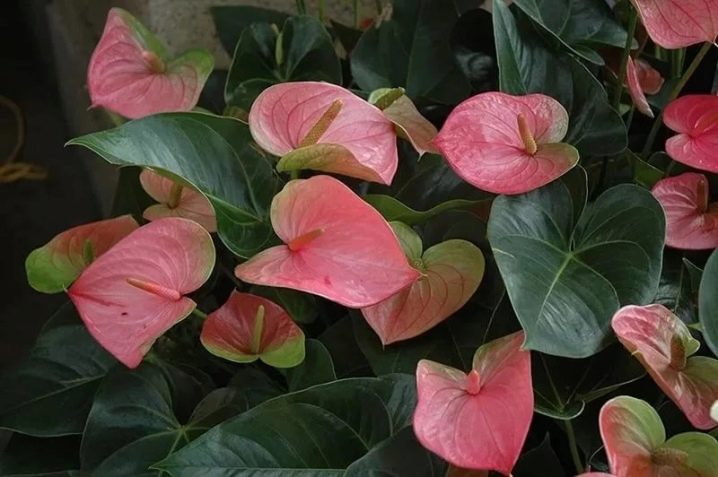
- Pink Alabama. Large-sized, part of the "Big Americans" variety series, where plants are named after the states of the United States. The bedspread is painted in an intense pink shade, the cobs, consisting of small flowers, have a whitish-cream color.
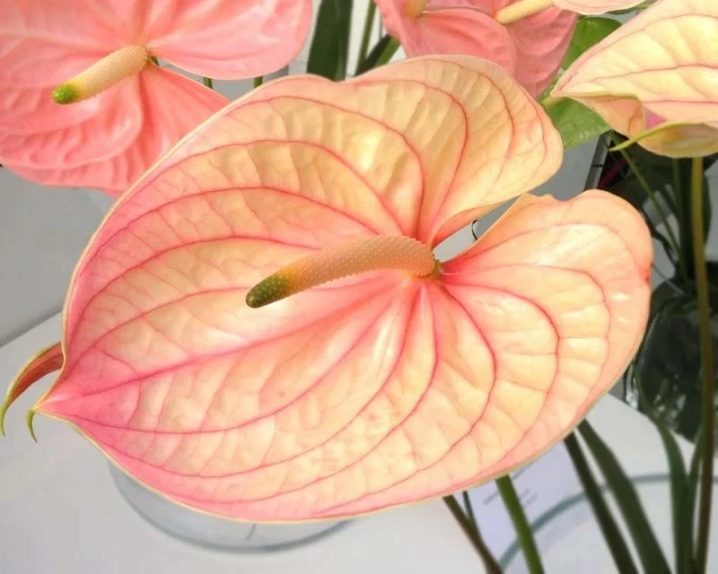
- Pink Queen. Medium-sized form with a very beautiful pink-crimson color of the bracts. Height 60 cm, bush with a lush crown.
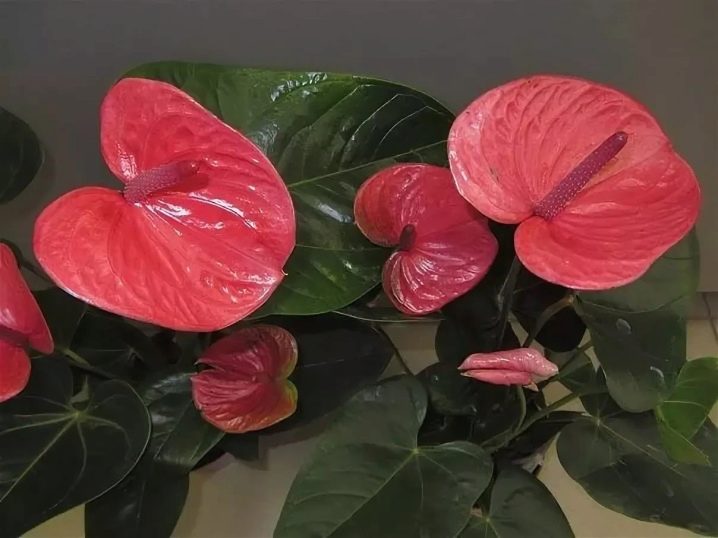
- Baby Orange. A variety that will appeal to orange lovers. Its representatives have a beautiful carrot-colored bedspread with a bright green edging.
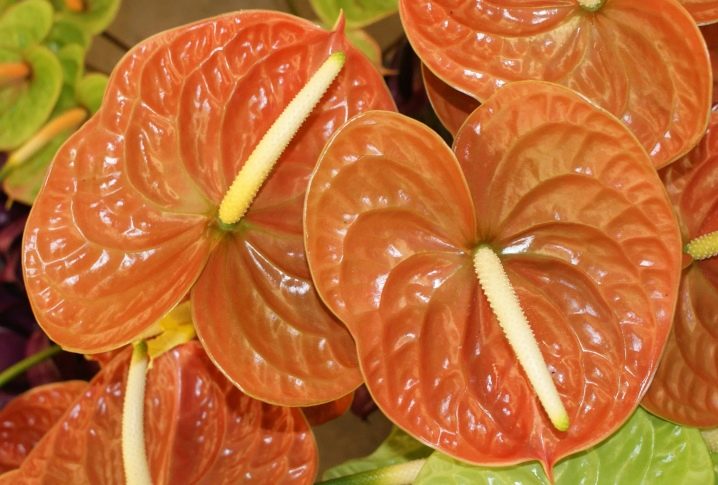
- Madural Orange. The clone variety "Madural" impresses with the splendor of the intense orange coloring of the bedspreads of a very large size.

- Almera. The bedspread of the representatives of this variety is painted in a fiery red color.
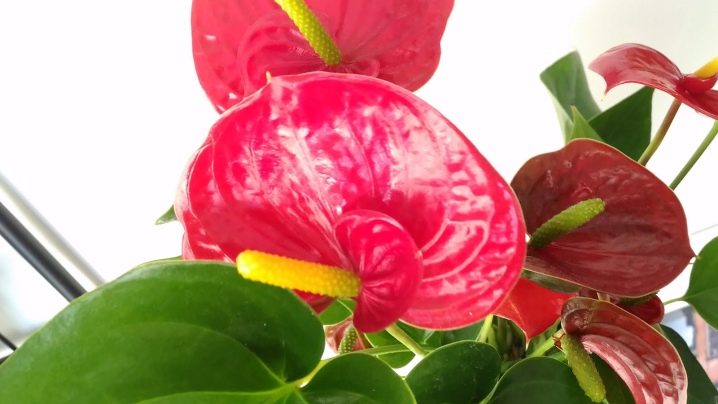
Decorative deciduous
A group of plants whose beauty is determined by their leaves.
- Crystal. The main decoration of this type of anthurium epiphytes is large velvety heart-shaped leaves. They are painted in a deep green color, and the outer side of the plate is covered with the finest mesh of primary silvery veins, shiny like crystal, which looks very impressive.Against the background of luxurious foliage, the inflorescences, surrounded by a miniature green or purple blanket, maximum 9 cm long and only 2 cm wide, look rather inconspicuous.
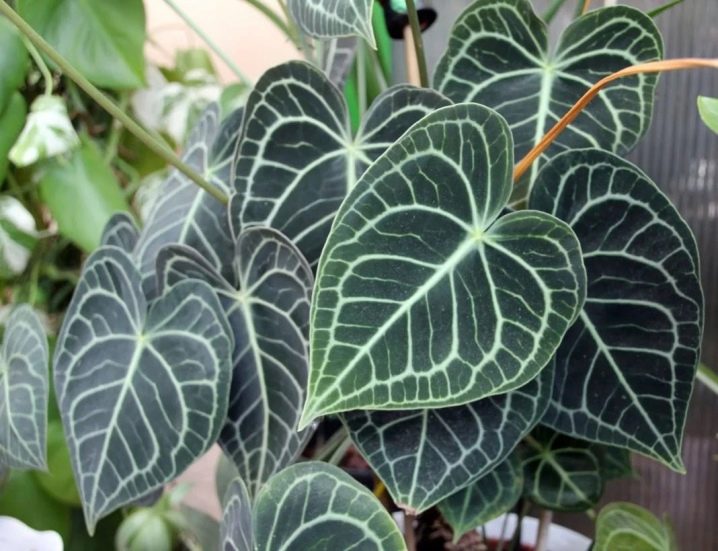
- Majestic. The appearance of these plants is similar to the representatives of the crystal anthurium species. They also boast spectacular large leaves with a velvety surface, on which bizarre patterns of first-order veins are clearly visible, with the difference that here they are not silvery, but an expressive olive shade. The color of the leaves themselves is mostly green, sometimes purple.
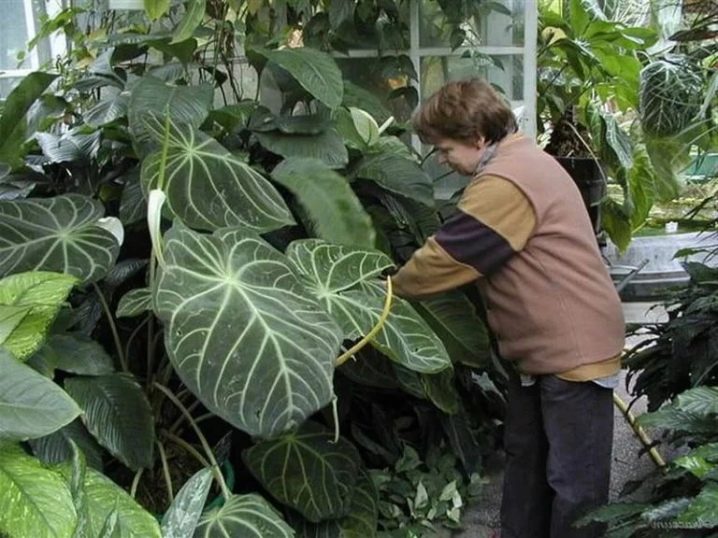
- Dissected. A variety of compact liana-like plants. Their feature is palmate-divided leaf blades with wavy segments of a lanceolate-linear shape along the edges. The number of segments can vary from 10 to 15 pieces, the length of such "blades" is 9-15 cm, width - up to 1.5 cm. Bracts and cob inflorescences have the same length of 7-10 cm.
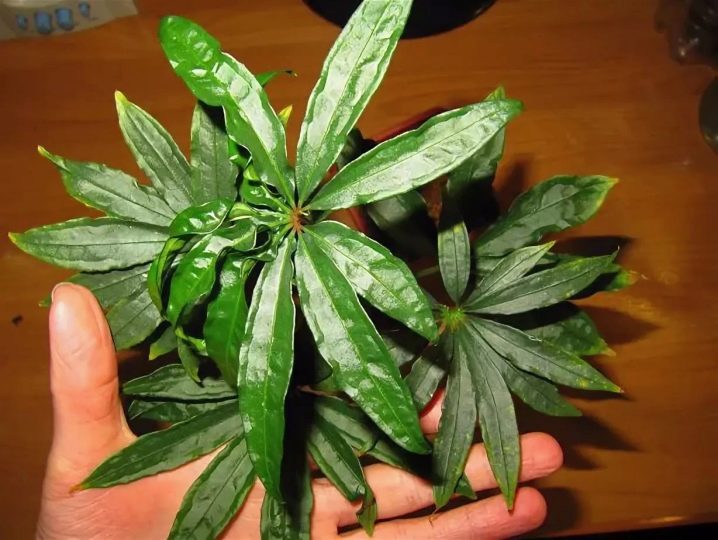
- Anthurium Baker. A distinctive feature of this species is the unusual shape of long leaves, which resembles a belt. The outer side of the leaf plates is velvety, and the lower one is speckled with barely noticeable brownish-red lateral veins. The leaves are 20-55 cm long, 4-9 cm wide. The bract has a leathery texture and yellowish-green color. The length of the bedspread is 5 cm, the width is 2.5 cm. The inflorescences are creamy, the fruits are red.
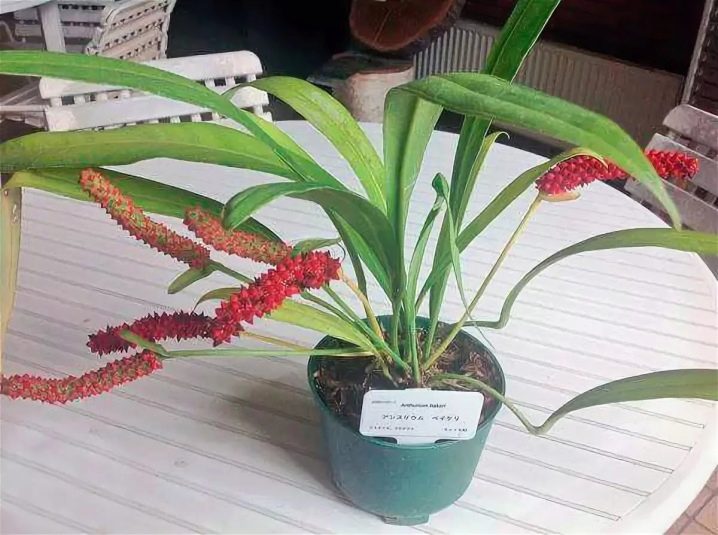
- Climbing. A tall species of climbing epiphytic plants, which are distinguished by the presence of thick roots and a stem that reaches a length of 1 meter. The leaf shape with a leathery texture can be lanceolate or oval. The lower part of the leaf plate is covered with numerous black dots. The length of the petioles is 3-9 cm, the leaves are longer than the peduncles. The color of the bedspread is pale greenish, the length is 9-15 cm. The ears are yellowish-green in color and are tiny, their length is only 1.5-2 cm. The color of the fruits varies from whitish to light purple.
Anthuriums of this species are unusually shade-tolerant, bloom and bear fruit without problems.

What are the colors?
Long-lived inflorescences of anthuriums impress with a variety of colors that have absorbed all the brightness, richness and freshness of the colors of the tropical flora. In the first introduced specimens, the coverlet had a juicy bright red color.
Varieties with a red bracts have long become classics.
- Success ed. The variety with the “speaking” name “fiery tongue”, since the coverlet of its representatives is painted in a very catchy, causing a crimson-red color.
- Royal Champion... Form with a rounded, elegantly raised from the edges of the bedspread of a thick red hue and erect pink cob.
- Dynamite Red. The variety is interesting for its unusual and very refined curved shape of the bracts and a spectacular intense red color.
In high demand in the world of floriculture are anthuriums of pastel colors. These are representatives of peach and rosy blush varieties.
An interesting group of anthuriums with the common varietal name Love, uniting large-flowered indoor varieties with glossy leaves and color of bedspreads in various shades of pink, from light and delicate to the brightest and most saturated.
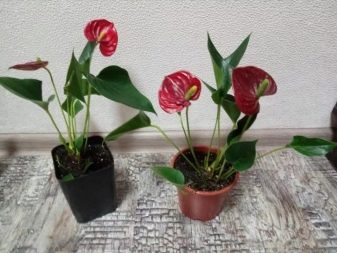
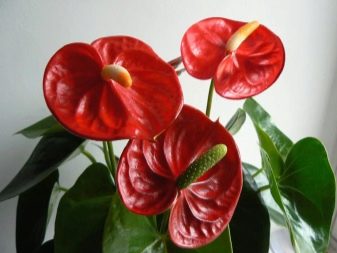
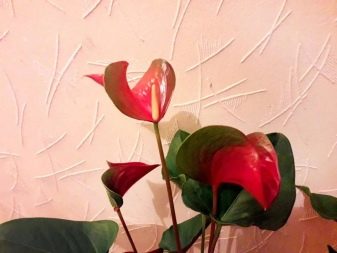
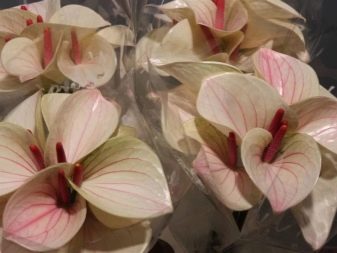
Of the pink varieties, several deserve special attention.
- "Princess Amalia Elegance". Plants with a bright pink veil in red veins and a uniformly colored pink cob. The tips of the bracts curl down beautifully.
- "California". Krupnomers with Extra Large flowers of dark pink or pinkish-red color.
- Flamingo pink. A variety with a soft pink bedspread and a dark purple ear, this combination looks very elegant.
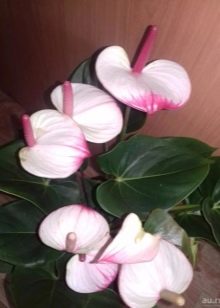
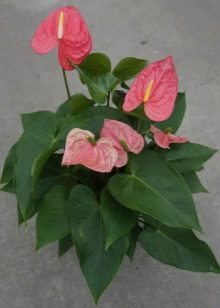
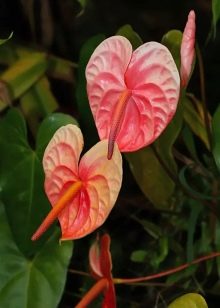
It is impossible not to mention the exquisite white varieties.
- Sumi... A hybrid with a round snow-white blanket, which changes color to pale green at the end of flowering.
- Adios White. Luxurious tall variety with a tulip-shaped snow-white veil and a bright yellow ear.
- Champion White. One of the best undersized hybrids of anthurium andrianum with an original slightly curled white veil in a slightly noticeable mesh of pinkish veins.
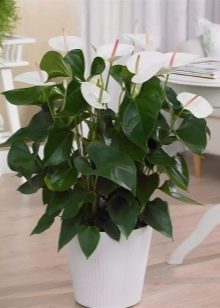
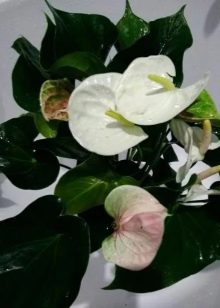

Orange varieties such as "Solara" with a bright orange-red blanket and yellow forms, the most famous of which is "Vanilla" with a delightful lemon blanket, enjoy no less success among florists.
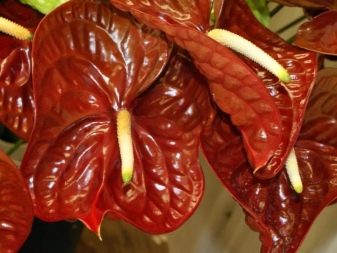

Purple anthuriums are very beautiful and spectacular.
- Fiorino. A variety in which the bracts are colored in a noble purple color with a lilac undertone.
- "Utah". The popularity of this garden hybrid was brought about by the mesmerizing purple-purple color of the bracts, which, in combination with an ear of a thick lilac shade, looks extremely impressive.
- "Cavalli Purple"... Large-sized form with a delightful pink-purple color of the bracts.

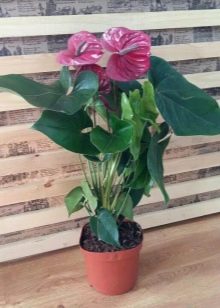
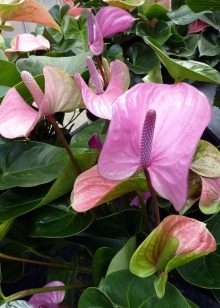
In the collection of anthuriums there are also many plants of luxurious dark colors.
- Otazu Brown. Hybrids of this variety attract attention with a dark burgundy, almost chocolate color of the bracts.
- "Black Beauty"... The darkest representative of the group of black varieties. Stylish, chic large size with a glossy bracts of thick chocolate color.
- Black Queen. A popular hybrid that inherited and retained both colors from their parents. For this reason, when flowering on a bush, inflorescences with a black and red blanket coexist. The ears are pale green.
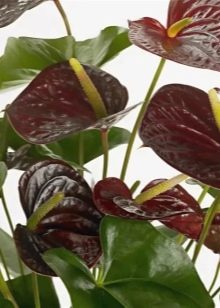
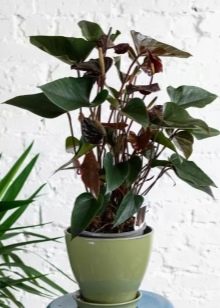
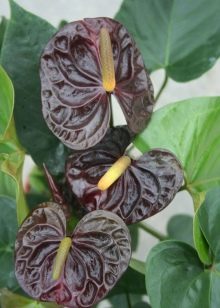
Interesting varieties with a bedspread in shades of green.
- Midori. In this variety, the flowers, when opened, immediately acquire a uniform pale green color.
- "Green Queen"... A variety in which the color of the plate during the entire flowering period changes from initially milky to deep red, and then pale green.
- Jaguar Green... A variety with a rare two-tone bedspread. Against the background of a bright lettuce bracts, pink veins are clearly visible, which looks incredibly impressive.
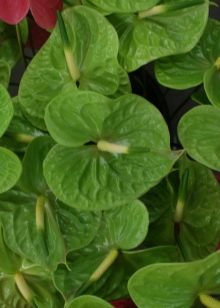
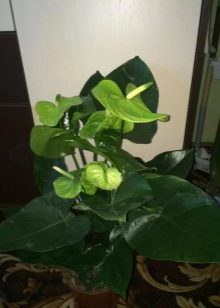
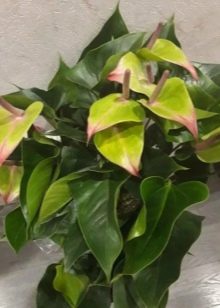
Anthuriums with a veil in shades of blue or blue do not exist in nature due to their lack of a gene for such pigments. However, varieties with an amazing ultramarine color of the bracts appear on the flower market. This is "Princess Alexia" and "Picasso".
Experts from the Biological Faculty of Moscow State University agree that their flowers are artificially pigmented by injecting the stalk using special ink.

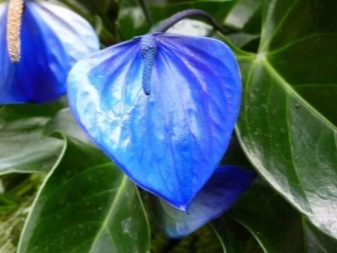
How to choose?
When choosing an anthurium, it is important to consider a number of points.
- Appearance. The main feature of a quality plant is the harmonious, proportional development of all parts from leaves to peduncles. Any defects (spots, traces of trimming on stems and leaves) are unacceptable.
- Health status. The presence of grayish or black spots on the back of the leaf plates indicates that the plant is sick or affected by pests.
- Number of buds. The more closed buds there are on the anthurium bush at the time of purchase, the longer you will be able to admire its flowering.
- Soil condition. The soil should not be too dry or, conversely, waterlogged, and it should not smell of rot, dampness or mustiness. All of the above indicates inadequate care of the plant in the store. These flowers have weak immunity, and they often get sick.
- Root system... The presence of a large number of roots sticking out of the drainage holes indicates that the plant is too crowded, and it will soon need a transplant.
How to choose anthurium, see below.



























The comment was sent successfully.